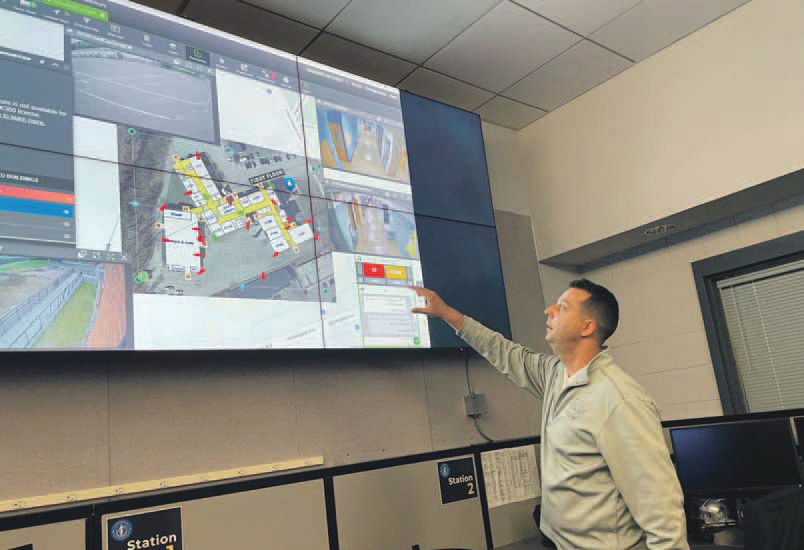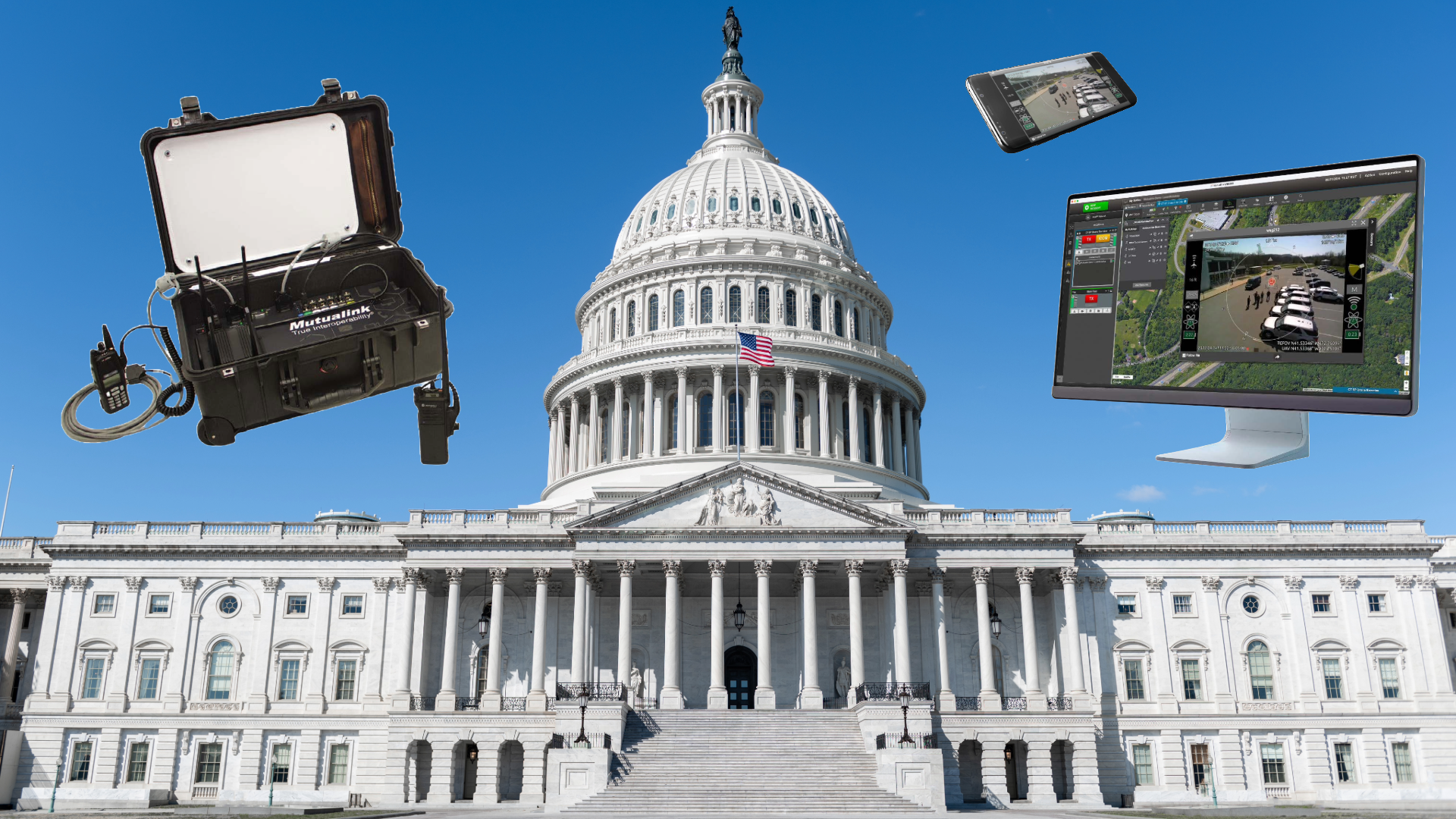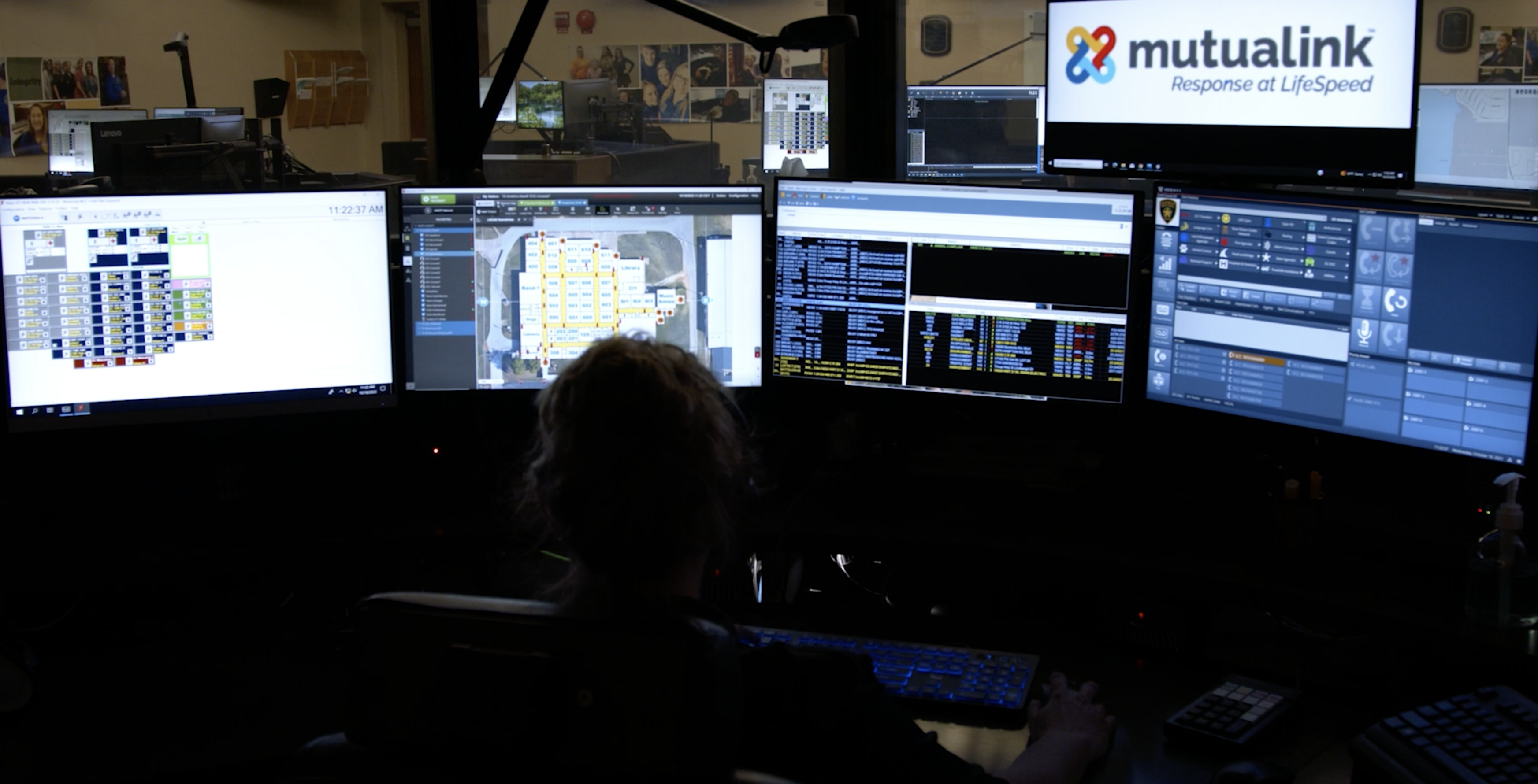Waterbury police install digital system to aid safety
BY LIVI STANFORD
REPUBLICAN-AMERICAN
WATERBURY — Inside the Real Time Crime Center at Waterbury Police Department on Wednesday there was silence as a demonstration began of a digital communication system that allows law enforcement and other public safety officials to securely share voice, video, and data instantly in the event of an emergency at a school.
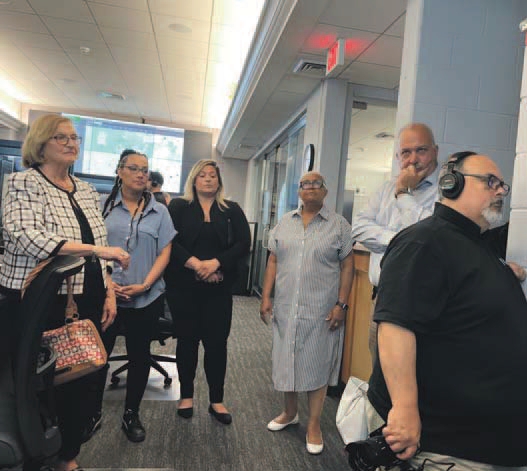
At left, from left, Board of Education members Elizabeth C. Brown and Melissa Serrano-Adorno, Belen Michelis, director of communications for Waterbury schools, Superintendent Verna Ruffin and Police Chief Fernando Spagnolo watch a demonstration of Mutualink.
Waterbury public schools are using a $800,000 federal grant to install the digital communication system in all of its 33 schools, and officials say the system should be up and running by the fall.
Officials with Mutualink, the digital system used in 29 towns and 82 schools in the state, said the system will help improve communications between public safety entities and speed up response times when every second counts during a school shooting or other emergency.
The Connecticut State Police and the state’s university and community colleges system also employ the Mutualink system. Further, more than 900 schools nationwide have the system installed, primarily in Florida, Arizona, and Connecticut. Mutualink was founded in 2006 in the aftermath of Sept. 11 because of the lack of the ability of first responders to communicate effectively across many radio frequencies.
During Wednesday’s simulation, Lt. Kevin Switz, who heads the Real Time Crime Center, answered the call.
“Waterbury Police Department. What is going on?” Switz said.
As soon as Switz answered, public safety officials including Northwest Public Safety Dispatch were connected, and they could see three designated cameras at the top and bottom of a large screen displaying what was going on in the school.
A COLORIZED FLOOR PLAN then came into view showing the cameras that are in the school. Each camera can be clicked on to provide a view of what is occurring at the school. There is also a chat function that allows police agencies to text and share files through the software.
“We have an intruder in the building,” said Dan Barry, security and school safety coordinator, in response to the simulation at Sprague school.
Switz asked for a description and location of the suspect. Immediately a description became readily available of the suspect in the simulation.
“5’7”, 162 pounds, bald head, wearing a blue shirt with glasses,” Barry said.
“Any weapons involved?” Switz said.
“None seen at this time,” Barry said, ending the simulation.

Waterbury Police Chief Fernando Spagnolo views a simulation of the Mutualink digital system, which allows law enforcement and other public safety officials to securely share voice, video and data instantly in the event of an emergency at a school.
City Police Chief Fernando Spagnolo said the system is valuable in tying in communications all in one place and bringing it to one platform, which will avoid information being lost in translation between police and dispatch or the schools.
“The information will be provided more accurately,” Spagnolo said. “The information won’t go from the school to the dispatch center, conveyed to the police. The information will tie everybody in. All the stakeholders will be tied in at one time. We are all sharing the same information. It is bringing all today’s technology that’s available in this school to one platform, one place, where all the stakeholders are looking at the same thing.”
Joseph Dooley, director of public safety and security solutions at Mutualink and a retired police chief from the Orange Police Department and Southern Connecticut State University Police, said the system is vital.
“It is an incredible tool to aid public safety agencies in dealing with a variety of incidents,” Dooley said. “It bridges communications to expedite the response and resolve it quickly. It provides law enforcement and other public safety officials with critical information before arriving on the scene, which helps mitigate the threat quickly.”
IN A CURRENT TRADITIONAL APPROACH when a 911 call comes in, police are responding with little to no information. By contrast, Dooley said, Mutualink provides critical information to the first responders before they arrive on the scene.
“Mutualink allows the police to see what is going on in the event they can’t understand what the caller is telling them,” he said. “It improves response time because when they arrive, they know exactly the area to focus on.”
With the digital system, Dooley explained the first responder has a good idea of what is going on as opposed to having to wait for police to breach the building and report on what they see. Dooley said this system can help reduce casualties in the event of a mass shooting because first responders know where they are going and can pinpoint where the perpetrator is without even speaking to school staff because of the
digital system’s maps and other information concerning up-to-date information on the incident.
Superintendent Verna Ruffin said the new digital communications system is a major part of the school’s safety plan.
“I think it definitely helps,” she said. “It is in real-time. It is reliable and definitely improves the communications and safety warnings we might need.”
SCHOOL SAFETY EXPERTS said while technology is important and could be helpful in rapid and accurate communications and reducing casualties, training teachers and students to respond to school violence while providing constant student supervision is integral to thwarting attacks.
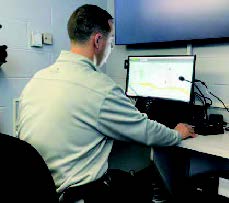
Waterbury police Lt. Kevin Switz, head of the Real Time Crime Center, tests the Mutualink system, which will be used in Waterbury schools this fall.
Michael Dorn, executive director of Safe Havens International, a nonprofit K-12 school safety center in Macon, Ga, who has worked in the field of campus safety for more than 43 years and leads the world’s largest K-12 school safety center, said speeding up the arrival of first responders may not always reduce casualties as victims are often dead before first responders arrive on the scene. He said many of the victims died in the first 30 to 60 seconds of shootings.
While stating he has not vetted Mutualink, he said his “general observations are that the features of the system could help improve response times, the effectiveness of the responses by public safety officials and reduce casualties.” He said the system must be reliable and personnel must be trained properly in how to use it.
Bill Vincelette, vice president of operations for Mutualink, said more than half the schools have the new software in place and all will be completed by the new school year. He added that staff would also receiving training.
